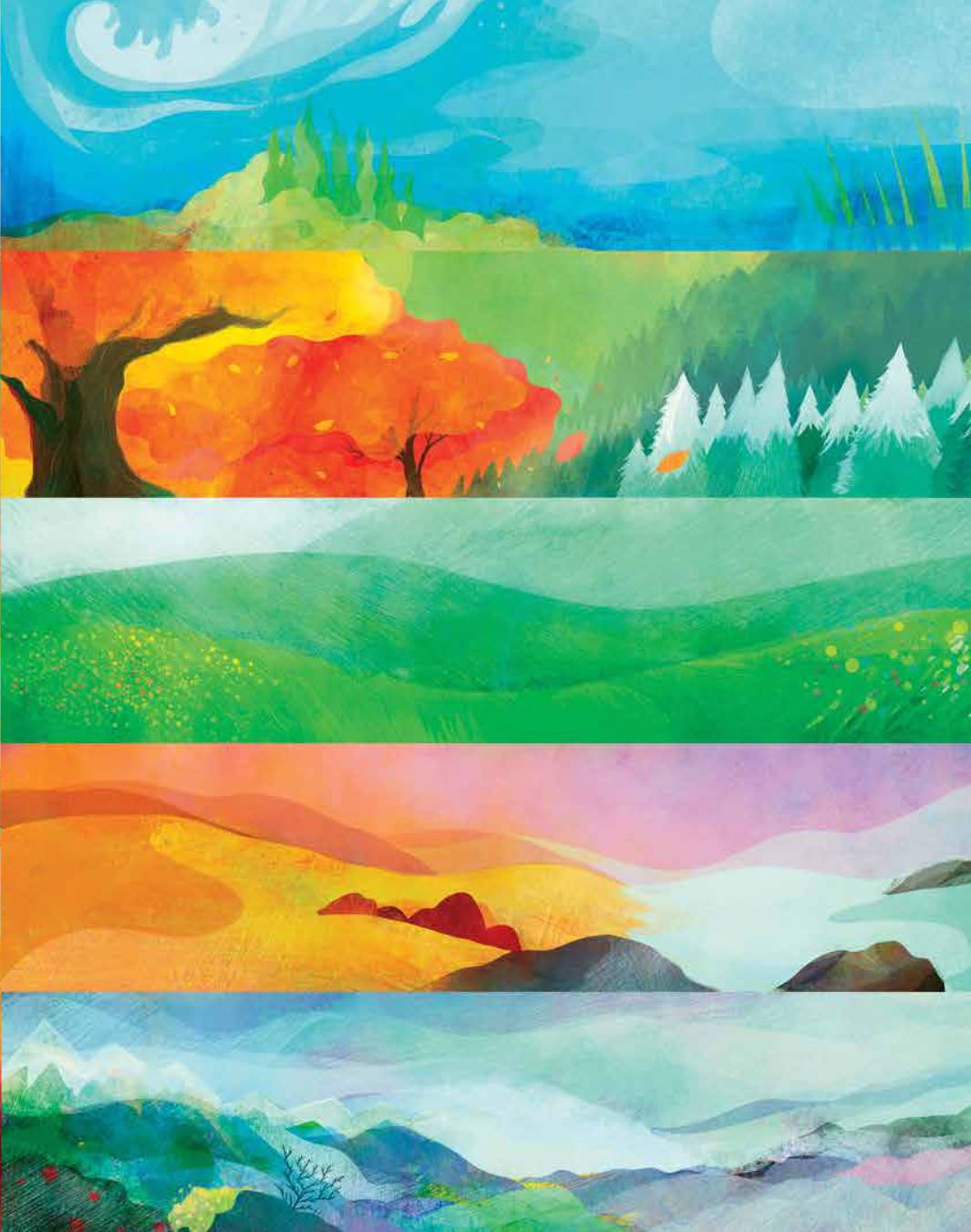
AQUATIC: Any place with water. These are salty — oceans, seas,
coral reefs, and estuaries (where rivers join seas) — and fresh
water — rivers, lakes, ponds, and wetlands.
FOREST: Tropical and temperate rainforests. These can be cold taiga
forests in the north (also called boreal forests, full of evergreen
trees that never lose their leaves) or deciduous forests where the
leaves on the trees change color and fall off every year.
GRASSLAND: Large flat areas and hills covered with grass and
flowers. Plains, savannas, and steppes are all grasslands
and are often home to vast herds of roaming animals.
DESERT: Dry regions with little rainfall. Usually, deserts are sandy
and rocky, but anywhere with scarce rain counts as a desert biome.
Antarctica has giant deserts, even though it’s not hot or sandy.
TUNDRA: Cold rocky places where there are strong winds and no
trees. Only lichen and small shrubs can survive here. The Arctic
tundra is found near the North and South poles. Alpine tundra is
found all over the world on the tops of high mountains.
Let’s take a closer look and see what animals live in each biome.


